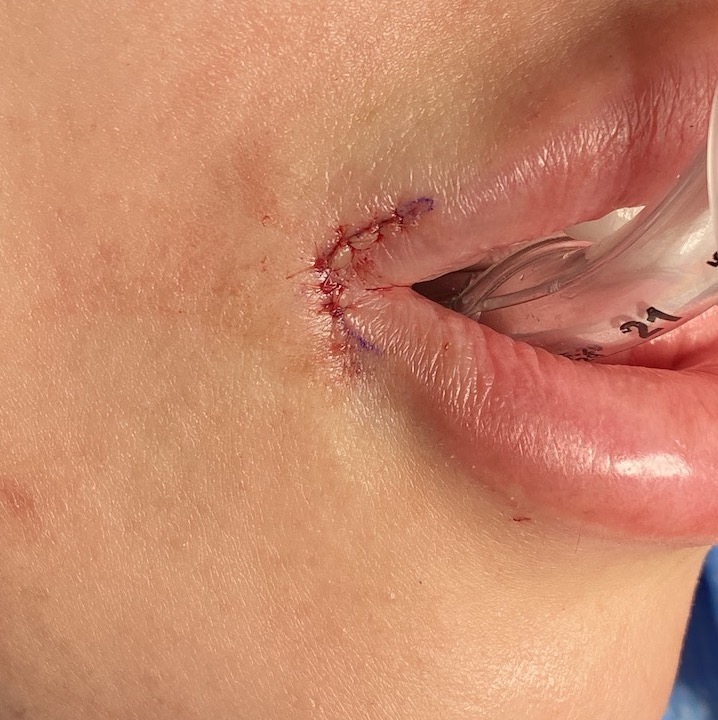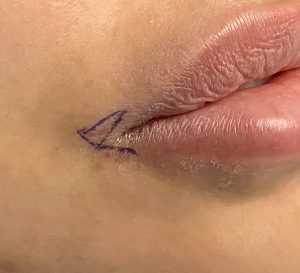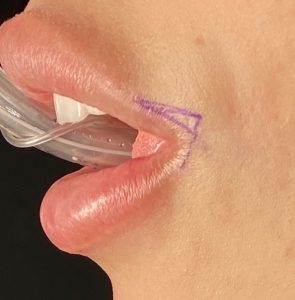Downturning of the corners of the mouth can occur from aging or as part of a natural mouth shape. Regardless of its origin downturned mouth corners are not a desirable mouth shape as it conveys an impression of unhappiness or even appearing angry or mad. The most common form of lifting of the downturned mouth corners are injectable Botox and filler treatments. Botox injections weakens the depressor muscles to counteract any downward pull on the corners and fillers act to lift the corners by the upward push of the injected volume.
Surgical corner of mouth lifts are done far less commonly than injection treatments but do offer a more permanent solution. Their effectiveness is based on the removal of overhanging skin and muscle tissue with an upward repositioning of the mouth corner. They have been around for a long time but have never gained much traction with surgeons or patients due to lack of familiarity and the fear of adverse scarring. Injection treatments offer immediate results without surgery even if the amount of lift is much more limited.
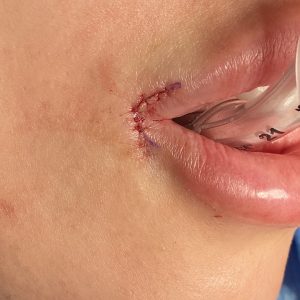
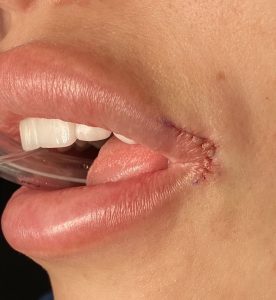
While keeping the scar line restricted to the vermilion edges of the mouth corner does not ensure that a scar revision would never be needed, but it keeps it limited to an area that is far more favorable to acceptable scarring than outward onto the facial skin.
Dr. Barry Eppley
Indianapolis, Indiana

